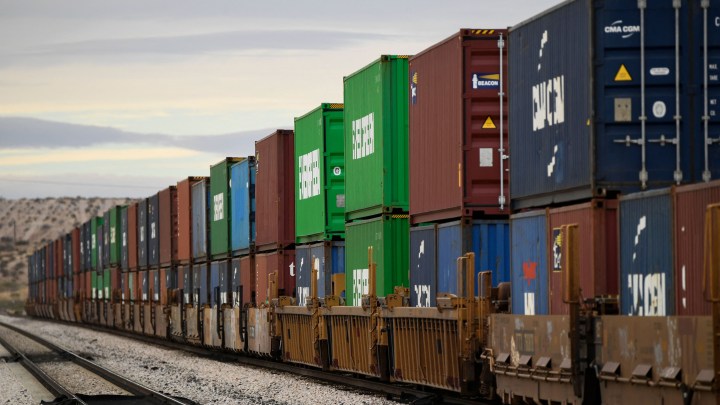
The U.S. economy tries to find its happy place

There’s a question we keep asking as the pandemic’s effects wane … then surge … then surge again: Is this economy driven more by goods — despite all that supply chain craziness — or services?
This week, we got a look under the hoods of both these sectors. On Monday, the Purchasing Managers’ Index for manufacturing came out, followed Wednesday by the PMI for the service sector. Both are from IHS Markit and both were looking at December, as the omicron coronavirus variant gathered steam.
As many of us scoured store shelves looking for holiday gifts that month, Luke Kawa and his family decided to save themselves the headache and sit Christmas out.
“So I wasn’t as stuck in the supply chain snarls as everyone else might have been,” said Kawa, a strategist at UBS Asset Management. He thinks the snarls could be straightening out.
“This could be a bit of a, you know, darkest-before-the-dawn-type moment,” he said.
The December PMIs back up that theory. On the plus side, per IHS Markit chief business economist Chris Williamson, “manufacturing, which has lagged, actually saw something of a pickup in December because a lot of the supply chain issues … are starting to ease.”
But the picture is a little less rosy in the service sector, where so-called backlogs of work persist. IHS defines these as “received but unfilled orders” that companies are not able to start or complete.
“There’s been an issue there of just not having the capacity to meet demand from customers,” Williamson said, adding that’s partly because it’s still hard to find and keep workers.
Despite those kinds of pressures, it all means we’re on a path toward more moderate growth, according to Dean Baker, senior economist at the Center for Economic and Policy Research.
And that’s a good thing. “We know the economy can’t sustain the sort of growth that we saw in 2021,” he said.
Baker said he wants to see a more moderate level of growth that has staying power.
There’s a lot happening in the world. Through it all, Marketplace is here for you.
You rely on Marketplace to break down the world’s events and tell you how it affects you in a fact-based, approachable way. We rely on your financial support to keep making that possible.
Your donation today powers the independent journalism that you rely on. For just $5/month, you can help sustain Marketplace so we can keep reporting on the things that matter to you.











